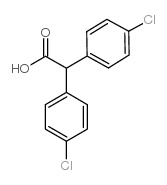Effects of L-arginine on the afferent resting activity in the cephalopod statocyst.
Y Tu, B U Budelmann
Index: Brain Res. 845(1) , 35-49, (1999)
Full Text: HTML
Abstract
The effects of bath application of the nitric oxide (NO) precursor L-arginine (L-ARG) on the resting activity (RA) of afferent crista fibers were studied in isolated statocysts of the cuttlefish Sepia officinalis under various experimental conditions. L-ARG (threshold 10(-7) M) had three different effects: inhibition, excitation, and excitation followed by an inhibition; only the inhibitory effect of L-ARG was dose-dependent. D-Arginine (D-ARG) had no effect. When the preparation was pre-treated with NO synthase inhibitors (N(G)-Nitric-L-arginine methyl ester HCl (L-NAME), N(G)-Nitro-L-arginine (L-NOARG)), both the inhibitory and the excitatory effects of L-ARG significantly decreased at higher concentrations (10(-5 to -4) M), or were completely blocked at lower concentrations (10(-7 to -6) M), of L-ARG. When the preparation was pre-treated with guanylate cyclase inhibitors (1H-[1,2, 4]oxadiazolo[4,3,-a]quinoxalin-1-one (ODQ), methylene blue (M-BLU), cystamine (CYS)), L-ARG had only excitatory effects, whereas its effects were only inhibitory when the preparation was pre-treated with adenylate cyclase inhibitors 2',3'-dideoxyadenosine (DDA), MDL-12330A (MDL), nicotinic acid (NIC-A)). L-ARG had no effects when the pre-treatment was with a guanylate cyclase inhibitor and an adenylate cyclase inhibitor combined; in that situation, the RA of the afferent fibers remained. These data indicate that in cephalopod statocysts, a cGMP and a cAMP signal transduction pathway (presumably via the generation of NO) are responsible for the effects of L-ARG on the RA of crista afferent fibers. They also indicate that the L-ARG-cGMP pathway is the dominant pathway and is inhibitory, and that both pathways have only modulatory effects on, but are not essential for, the generation of the RA.
Related Compounds
| Structure | Name/CAS No. | Molecular Formula | Articles |
|---|---|---|---|
 |
4,4'-DDA
CAS:83-05-6 |
C14H10Cl2O2 |
|
Mitotane (1-(o-chlorophenyl)-1-(p-chlorophenyl)-2,2-dichloro...
1987-01-01 [Drug Metab. Dispos. 15(2) , 267-9, (1987)] |
|
Oxidation at C-1 controls the cytotoxicity of 1,1-dichloro-2...
1995-05-01 [Drug Metab. Dispos. 23(5) , 595-9, (1995)] |
|
Development of an enzyme-linked immunosorbent assay for the ...
1987-05-01 [Bull. Environ. Contam. Toxicol. 38(5) , 798-804, (1987)] |
|
[The enzymatic degradation of DDT. 6. The fate of the DDT me...
1987-01-01 [Nahrung 31(3) , 253-7, (1987)] |
|
Interaction of structurally similar pesticides with organic ...
1993-08-01 [J. Pharmacol. Exp. Ther. 266(2) , 673-7, (1993)] |